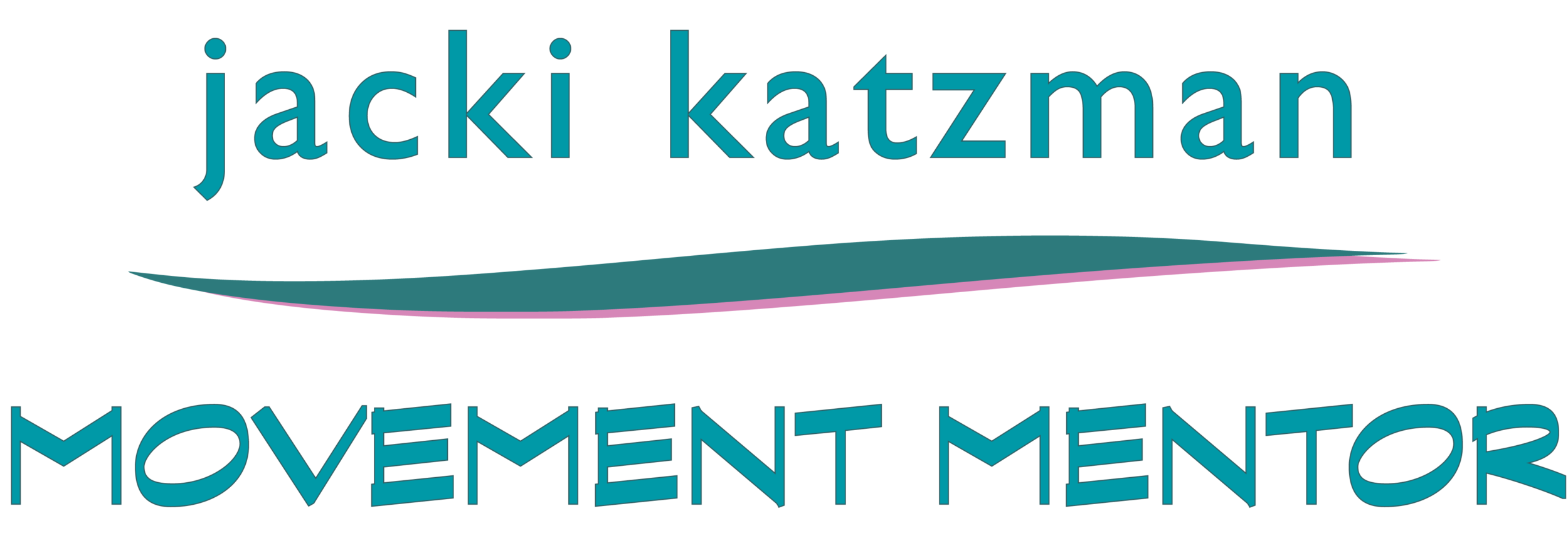Eye Hand Coordination - with a Twist
This lesson gets the whole torso moving when the eyes say “go!” Which is what you need for full twists, better peripheral vision, and generally well-coordinated action.
Lesson Summary
1. Orient with a reference point on the wall. Stand swing arms turning R & L eyes open/eyes closed, what leads what follows. Try with eyes open and closed. Use head and neck. With eyes closed, what leads and what leads the return? Rest and walk.
Sense organs have more than one function: they see and direct movement. Eyes are related to how we move and how we use our neck muscles, our spine. This lesson frees the eyes, head, and spine.
2. Scan in lying. Note position of legs, head, eyes weight in head.
3. Side-sit feet left, lean on R hand, L palm in front of face, turn to R looking at thumb.
4. Side sit feet Right, stay turned left, move eyes only to left and return to thumb. Mark a reference point on the wall.
a. Does your spine get longer or shorter as you turn only to left and back to center.
5. Side sit Feet left, Hand in front of face turn R. Mark reference point.
a. turn right before placing hand leaning. Eyes only look right and back to thumb.
b. Back to center. Rest.
6. Side sit Feet Right; right hand in front of face then lean to place left arm
a. Eyes left and back to thumb. Return to center.
b. Notice sitting, length of spine.
c. Stay turned left, close right eye. Head and eyes move left, only left eye open.
d. close L eye and look left and return to hand. How smoothly does it track
e. Open both eyes, look at thumb and turn left. Notice length of spine. Track turn on wall. Rest. Notice weight of eyes in sockets.
7. Feet left, Left hand in front of face, turn and lean on R hand.
a. Turn right, sense the length of the spine as you turn. Left hip might lift to help.
b. Stay turned to right, head and eyes turn right and back to thumb
c. Close left eye, look with right only to right and back to hand
d. Close Right eye, look right and return to hand
e. Open both eyes, look and thumb and turn right. Rest
8. Feet Left, left hand in front of face, turn right and place hand.
a. L hand on top of head, ear comes to shoulder, bend head/spine L & R, L hip moves closer/further from ground
9. Feet Right, right hand in front of face, place hand.
a. R hand on top of head, ear comes to shoulder, bend head/spine L & R, R hip moves closer/further from ground. Could try ear to shoulder, or ear and shoulder move together.
b. Hand guides head and head guides hand.
10. Feet Left, turn Right and lean on both hands. Turn shoulders, head and eyes R & L, then shoulder opposite to head/eyes. Make this comfortable. How do you prefer to lead?
a. Shoulders opposite eyes and head. Shoulder comes near to the chin and eyes look over the shoulder. Both sides. Then all in the same direction. Is it easier now? Can you use your pelvis to help?
11. Feet Right, turn Left and lean on both hands. Turn shoulders, head and eyes R & L, then shoulder opposite to head/eyes. Make this comfortable. What do you prefer to lead with.
a. Shoulders opposite eyes and head. Shoulder comes near to the chin and eyes look over the shoulder. Both sides. Then all in the same direction. Is it easier now? Can you use your pelvis to help?
12. Feet left – watch hand and mark against the reference point; same on other side.
13. Stand, turn R & L swinging arms, eyes open, eyes closed. What leads and follows when you turn and when you return?

